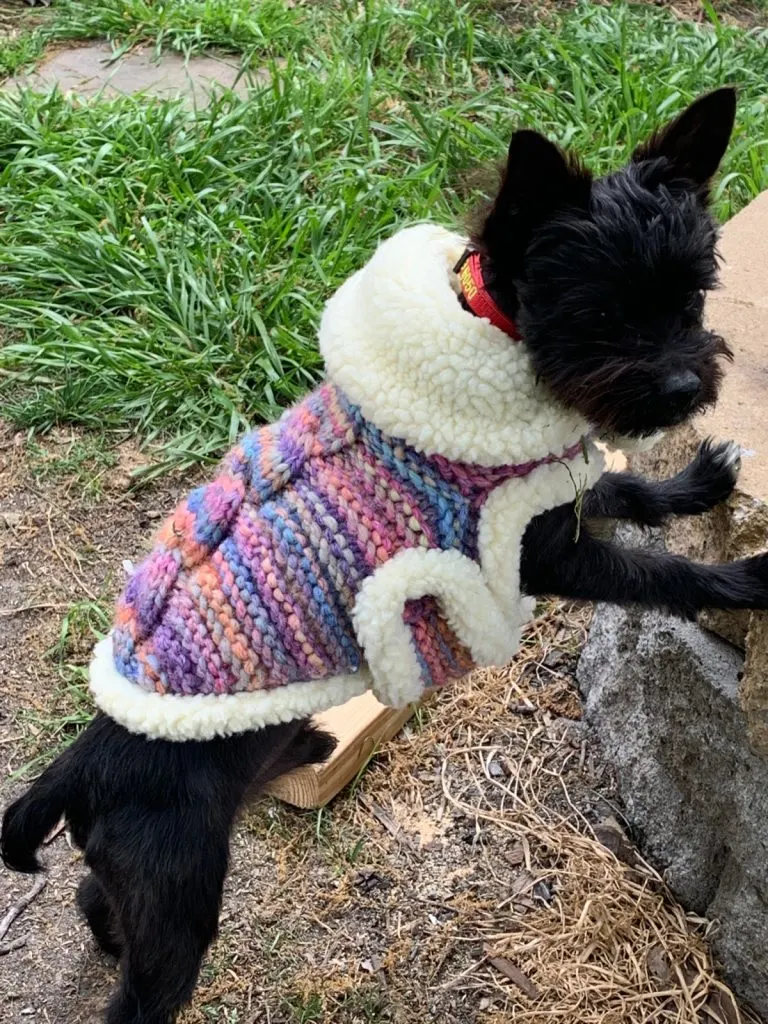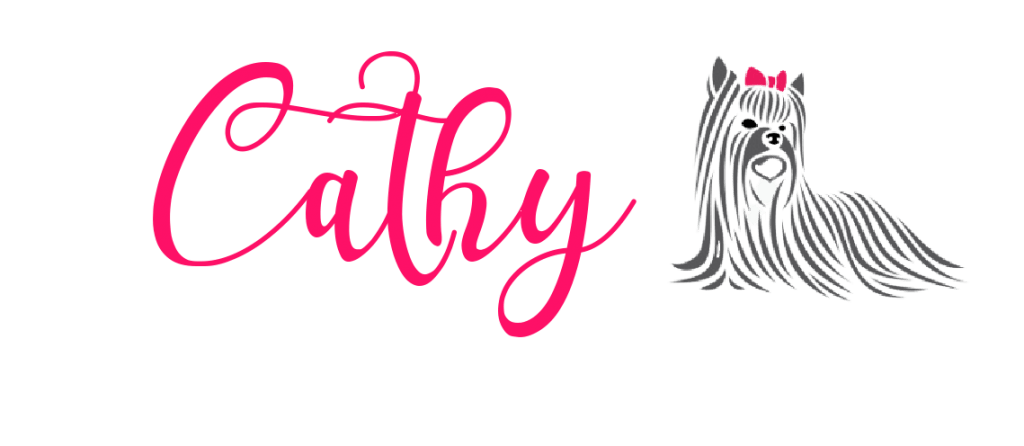Tail docking is a controversial topic in the dog-loving community. Some people believe that docking a dog’s tail is a cruel procedure, but regardless of how you feel about it, I think most people can agree that usually tail docking is done purely for cosmetic reasons which many feel is unnecessary since the small Yorkshire Terrier with a tail is a popular choice among dog lovers.
So, why are Yorkies’ tails often docked? It’s done to be compliant with the official Yorkshire Terrier breed standard. According to the Yorkshire Terrier Club of America, the tail is “docked to a medium length and carried slightly higher than the level of the back.”

I couldn’t find an explanation on the Yorkshire Terrier Club of America’s Club of America’s website as to why the tail is docked but the AKC does say this:
The American Kennel Club recognizes that ear cropping, tail docking, and dewclaw removal, as described in certain breed standards, are acceptable practices integral to defining and preserving breed character and/or enhancing good health. Appropriate veterinary care should be provided.
https://www.akc.org/press-releases/akc-statement-on-avma-crop-and-dock-policy/
While some owners and breeders argue that tail docking is necessary for show dogs, the mass majority of dogs are not show dogs, but companion animals
Some breed clubs have revised their breed standards to allow dogs with natural tails to compete in shows. Unfortunately, though, the Yorkshire Terrier Club has not revised its standards.
According to Sheila Judd, an Australian Shepherd breeder and a retired
veterinary technician, tail docking is a harsh procedure performed without
anesthesia typically when a puppy is three days old.
Sheila has reason to refuse to believe the assertion that a puppy’s neurological system isn’t fully developed until after the puppy has passed three days of life; she herself was an eyewitness to the procedure and it was heart-wrenching. You can watch her testimony at this link: https://www.youtube.com/watch?v=WYWU7CA1kOs
One of the potential risks of tail docking is that it can cause physical and psychological harm to the dog. Tail docking can lead to chronic pain and discomfort, which can negatively impact a dog’s overall well-being. Additionally, docking a dog’s tail can interfere with its ability to communicate with other dogs, as the tail plays an important role in canine social interactions.
For those Yorkie owners that are considering putting their dogs in the show ring, tail docking can become a big issue.
I’m not a dog show expert, but I did show my Yorkies in the 1980s. Dog shows are a place where purebred dogs are judged according to how closely their appearances and, to some extent their
personalities align with each breed’s official breed standard.
Dog shows serve a good purpose if you think about it because it helps the dog owners that want to breed their dogs for the right reasons. One of the most important reasons an owner of a purebred dog can have for breeding his dog is because he wants to perpetuate only the best representations of that dog’s breed and that means having a dog that matches its breed standard as closely as possible.
A dog that’s the best possible representation of its breed will carry as much of the breed’s positive, beneficial attributes as possible while carrying the lowest possible risk of falling prey to various health and genetic problems. However, we run into problems when the dog show world focuses too heavily on the dog’s outward appearance to the point where the dog’s quality of life is compromised.

How is a dog’s quality of life impacted by having his tail docked?
It’s common to hear people in the dog-loving community debate each other on whether dogs from working lines or show lines are better to own. That’s because the dog show world has, according to some, put too much emphasis on a dog’s physical appearance and not enough focus on improving a dog’s personality and purpose, which ultimately are the biggest factors that go into your determining if
you can easily live with a particular dog or not.
How is a dog’s quality of life impacted by having his tail docked?
One problem, sorry to be gross, is that a dog with a docked tail has a harder time pooping properly. If you watch carefully how dogs with full tails defecate, you’ll notice that they move their tails up and down slightly at the end of their defecation to pinch off the muscles in their anuses so they don’t get a bunch of
poop stuck to their rear ends.
I have two Yorkies with docked tails and I personally can attest that I
sometimes have to wash their butts after they have finished pooping. They sometimes have streaks of poop stuck to their rear end because they weren’t able to pinch off correctly at the end.

I’ve also heard some people say that dogs that lose their tails, or any other body parts, frequently experience the same phantom pain that humans with missing limbs have experienced: it’s a weird feeling like a limb should be there and it’s not. As a breast cancer survivor who had a double mastectomy, I can personally attest that the phantom pain phenomenon is a real thing.
This isn’t to say that dogs with docked tails live lives of chronic suffering. They can still lead pretty much normal lives, but their lives certainly aren’t ideal if they lack the tails they were born with.
Unless your vet recommends docking your dog’s tail for medical reasons (such as if an accident severely injures their tail), you’re probably better off sticking with letting them keep their tail.
Of course, since tail-docking is done at such a young age, your pup’s tail is usually already docked by the time you get them. But if you have the chance to talk to the breeder before this is done, you can ask that they don’t dock your puppy’s tail.
In conclusion, tail docking is a controversial topic in the dog-loving community, and there are valid arguments on both sides of the debate. While some owners and breeders may argue that tail docking is necessary to maintain breed standards, others believe that it is an unnecessary and painful procedure that can lead to long-term health problems. As a responsible dog owner, it is important to consider all of the potential risks and benefits of tail docking before making a decision.
If you haven’t guessed by now, I’m pro long tail for Yorkies even though both of my Yorkies have docked tails. I do have to admit my fluffy Yorkie Ziggy has the cutest little cotton tail, like a bunny. Here’s a photo of him with his chihuahua sister Lucy:

And then Bear’s tail is a bit longer though it is docked too. Here’s his photo:

Does your Yorkie have a docked tail? Are you the owner of a show dog? Please share in the comments what your experience has been like surrounding this controversial topic!


Cathy Bendzunas
Dog Blogger, Former Dog Groomer
I have adored Yorkies for well over 50 years. As a young adult, I began to show and breed them. Now, I just write about them and have several in my little pack of small dogs.
I have had dogs all my life and have trained as a dog groomer. I also have been a kennel worker, worked in a pet hotel through PetSmart, and still am a pet sitter.
Check out my bio for more information about me.
